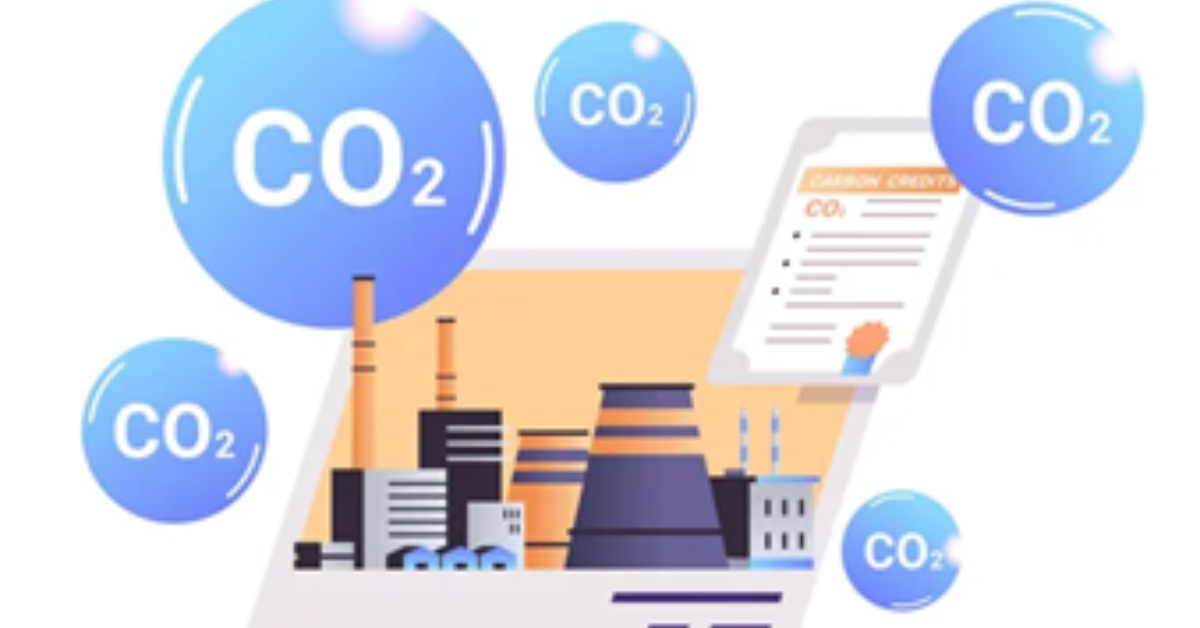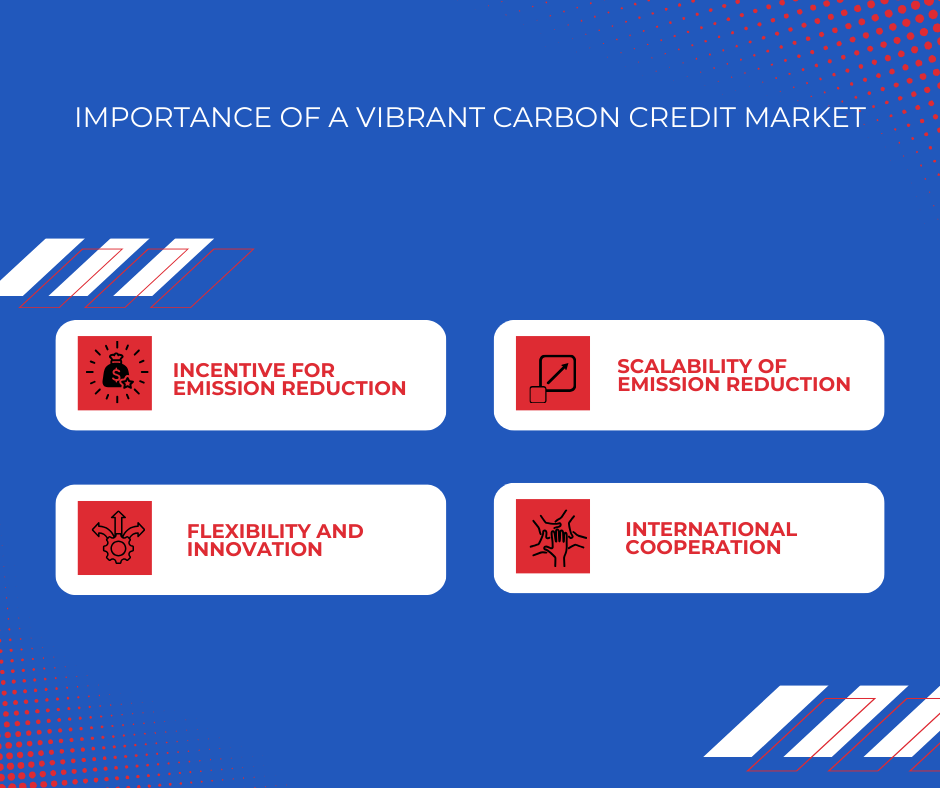Contact: +91 99725 24322 |
Menu
Menu
Quick summary: Explore the crucial role played by project developers in the carbon market. Learn how they drive climate action, navigate challenges, and bring carbon projects to life.

In the dynamic landscape of carbon markets and emissions reduction initiatives, carbon project developers play a pivotal role in driving climate action forward. These professionals and organizations are at the forefront of conceiving, planning, and implementing projects that reduce greenhouse gas emissions, contributing significantly to global efforts to combat climate change.
The Taskforce for Scaling the Voluntary Carbon Market, which was established by the private sector to help the market meet the goals of the Paris Agreement, states that the voluntary carbon market must scale at least 15-fold by 2030 in order to play its part in the delivery of global climate targets.
Whether it’s renewable energy installations, afforestation projects, or sustainable agriculture ventures, project developers are the architects of innovative solutions that not only mitigate carbon emissions but also create positive environmental and socio-economic impacts. In this blog, we’ll delve into the essential role of project developers in the carbon market and explore how their expertise is shaping a more sustainable and climate-resilient future.
Carbon project developers are individuals or organizations that develop and manage carbon offset projects. These projects are designed to reduce or remove greenhouse gas emissions from the atmosphere. Carbon offset credits are generated when a carbon project reduces or removes emissions beyond what would have happened anyway, and these credits can then be sold to businesses and individuals to offset their own emissions.
Carbon project developers play an important role in the fight against climate change. They work to identify, develop, and implement projects that have a real and measurable impact on greenhouse gas emissions. Carbon project developers also work to ensure that their projects are sustainable and deliver other benefits, such as job creation, improved air quality, and biodiversity protection.
These developers aren’t limited to just one type of project or place. They work in all sorts of areas and industries, wherever emissions need to be reduced. This could mean building huge wind farms in open spaces, bringing forests back to life in tropical regions, or creating new, eco-friendly ways for industries in cities to work. They’re like change-makers in action, where it matters most.
Some of the most common types of carbon offset projects include:
Carbon project developers typically work with a variety of stakeholders, including project owners, government agencies, communities, and carbon credit buyers. They also need to have a deep understanding of the carbon market and the various carbon standards that exist.
Making a Bigger Impact
The work of carbon project developers doesn’t just stop with local changes. They’re the ones who can take small ideas and make them really, really big. Imagine entire cities powered by wind or solar energy, or large areas of land filled with new trees that soak up carbon from the air. These kinds of projects, often led by these developers, have a massive effect on reducing emissions all over the world.
Examples of Big Changes
Think about those vast wind farms that can power whole cities or those projects that bring life back to damaged lands. These are the kinds of projects that carbon project developers are known for, and they give us hope that we can win the fight against climate change.
Carbon project developers play a pivotal role in the dynamic world of carbon markets, where environmental stewardship meets economic innovation. Let’s delve into their relationship with carbon markets, how carbon credits emerge from their initiatives, and the significance of a thriving carbon credit market.
Carbon project developers and carbon markets share a symbiotic relationship, each essential to the success of the other. These markets serve as platforms where the results of developers’ hard work and commitment to emission reduction are transformed into valuable assets known as carbon credits.
Carbon project developers bring fresh ideas and initiatives to the table, creating innovative projects that reduce greenhouse gas emissions. These projects, whether they involve renewable energy installations, reforestation efforts, or emissions-reducing technologies, are designed to contribute to a more sustainable and environmentally friendly future.
Carbon credits are the tangible outcome of these projects. Each credit represents a quantifiable reduction in greenhouse gas emissions. The process of generating carbon credits involves meticulous planning, implementation, and verification to ensure that the emissions reductions are real, measurable, and adhere to recognized standards.
For example, in a renewable energy project, the reduction in carbon emissions is measured by comparing the emissions generated by the renewable energy source to the emissions that would have occurred if a non-renewable energy source had been used. This reduction is then translated into carbon credits, with each credit typically representing one metric ton of carbon dioxide equivalent (CO2e) emissions avoided.
Carbon project developers and carbon markets are intricately linked in the pursuit of climate action. Developers bring ingenuity and dedication to creating emission reduction projects, while carbon markets provide the means to turn these efforts into tangible carbon credits. A thriving carbon credit market is pivotal in incentivizing emission reductions, driving innovation, and fostering international cooperation in the fight against climate change.

Corporate climate leadership is evolving, prompting companies to seek expert guidance in crafting strong commitments and sustainable action plans. Trusted partners are instrumental in developing long-term strategies. Many corporations are now interested in a diverse portfolio of projects that yield reliable emissions reductions, ensuring that their climate claims align with best practices and maintain credibility. Reputation management during the decarbonization process is also gaining significance, as media scrutiny intensifies, making transparency and accuracy essential to avoid any potential misperceptions. They depend on project developers to offer impartial assurance regarding a project’s quality, integrity, and impact. This is diligently carried out with rigorous quality assurance on their behalf, instilling in them the certainty needed to make investments.
Every company has its unique preferences when it comes to the kinds of projects and their preferred locations for climate action. Many companies choose to support a diverse portfolio of projects that align with their specific needs. Adopting a portfolio strategy allows these businesses to mitigate risk, stay within budget constraints, and contribute to various regions that are relevant to their operations.
For individual project developers, tapping into this diverse demand can be challenging. Collaborating with a partner who has cultivated and comprehends these client relationships and has established the necessary systems and processes to meet and exceed client expectations, becomes a more attractive option.
In addition to verified emissions reductions, corporations are increasingly motivated by the additional positive impacts of projects, particularly those aligned with the UN Sustainable Development Goals (SDGs). Highlighting the favorable social, biodiversity, and equity effects delivered by our project partners plays a crucial role in enticing companies to acquire carbon credits or support project development.
These developers opt to collaborate with project implementation partners who possess an in-depth understanding of local stakeholders and ecosystems, along with the highest ethical standards. Furthermore, these developers assist in quantifying these diverse benefits for corporations by guiding projects through various certifications.
The demand for projects in the portfolio encompasses a diverse range, including nature-based solutions, carbon reduction, and carbon removal initiatives. Organizations are increasingly emphasizing biodiversity preservation and committing to achieving net-zero emissions. Consequently, nature-based projects, which play a dual role in safeguarding existing forests and creating new carbon sinks in natural ecosystems, remain a sought-after choice.
Nonetheless, clients do recognize the continued importance of various project types in achieving the climate objectives. Carbon Project developers collaborate with them to construct a well-rounded program of project activities that supports initiatives aimed at both removing emissions from the atmosphere and preventing further emissions. This approach ensures a consistent flow of funding for the development and expansion of emission avoidance projects, ranging from rainforest protection to the implementation of clean cooking and safe water solutions.
Carbon project developers play a crucial role in mitigating climate change, but they encounter several significant challenges in their work. Here are three key challenges they face:
These challenges highlight the intricate nature of carbon project development, which involves financial acumen, regulatory expertise, and a commitment to demonstrating real and measurable emissions reductions. Successfully addressing these challenges is essential for advancing climate action and achieving the goals of emission reduction projects.
Innovation and technology are the driving forces propelling carbon project developers towards success. They employ advanced monitoring systems to meticulously track emissions reductions and leverage cutting-edge renewable energy solutions that redefine sustainability. Developers stand at the forefront of harnessing technological advancements to pave the way for a greener, more sustainable future.
To address these challenges effectively, project developers often collaborate with technology solution providers like TraceX. TraceX’s DMRV solutions streamline and enhance the monitoring and reporting process. These partnerships help ensure the credibility and success of carbon offset projects in the voluntary carbon market.
Project developers have a significant opportunity to capitalize on the growing corporate demand for climate change mitigation projects, whether they focus on emissions removal or avoidance. However, navigating this demand and securing upfront development funding can be a complex process. For project developers seeking to expand their influence in the climate action arena, partnering with an experienced collaborator is essential. Looking for a partner with access to financing, a strong reputation among major creditworthy credit buyers, a robust technology solution provider, a deep understanding of the intricacies of carbon finance project development, and the ability to stay informed about market dynamics could impact their projects.
In the grand tapestry of carbon markets and climate action, the role of carbon project developers stands as a testament to the boundless potential of innovation, determination, and transformation. They are not mere builders; they are visionaries who turn dreams into reality. Their work extends far beyond emission reduction; it’s about constructing a brighter future—one project at a time—for a more sustainable and resilient world that benefits us all.
